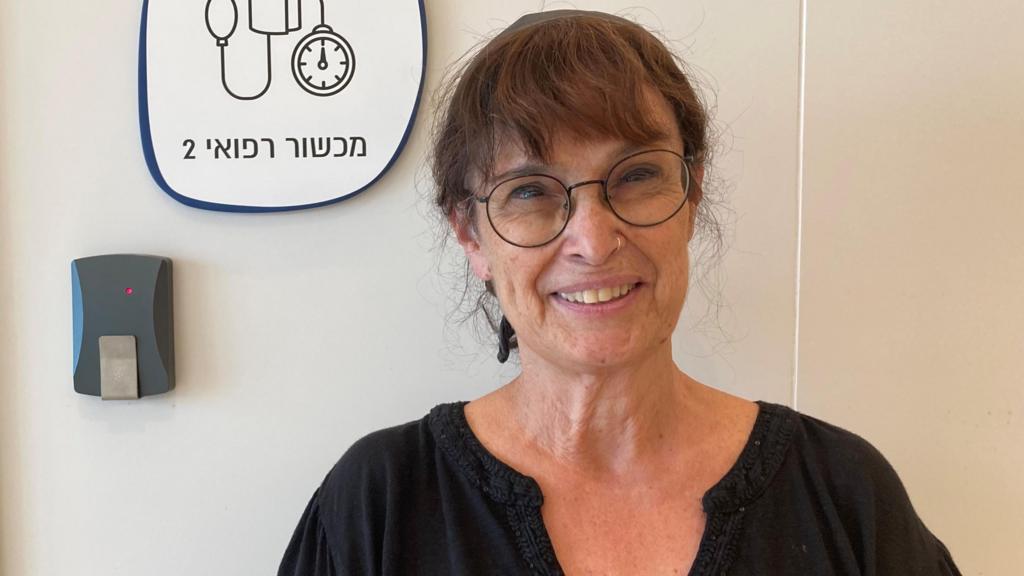When the first hostages are released by Hamas in Gaza, transported into Israel, and subsequently transferred by helicopter to the Rabin Medical Center in Petah Tikva, Dr. Mikhal Steinman will escort them to the sixth floor. There, the glass door will be swiped open, revealing a long-awaited reunion with their closest family members after more than 700 days in captivity.
“It is a privilege,” states the head of nursing. “These are the moments, when I’m 70 or 80, that I will remember. They symbolize so many values – as a nurse, as a mother, as a woman, as an Israeli.”
Twenty living hostages are expected to be released under the terms of the agreement between Israel and Hamas, with several slated to be brought to this hospital.
This marks the third time the dedicated hostage unit has been activated. The BBC visited the unit on Saturday, coinciding with the medical team’s learning of the identities of the hostages under their care.
“There is no established field of captivity medicine, and we are in the process of inventing it,” Dr. Steinman informed the BBC on Saturday, after the team received information about the hostages they would be treating.
According to Dr. Steinman, the staff has gleaned two crucial lessons from the previous hostage releases in November 2023 and January of this year.
The first is the need to be “a medical detective,” striving to comprehend the experiences of the hostages during their extended periods of captivity.
In the cases of earlier hostages, who were often emaciated, shackled, and subjected to abuse, “they had anomalies in their blood exams, in their enzymes, that defied immediate explanation.”
The team has also learned that symptoms may not manifest for days or even weeks following their release.
“Captivity leaves an indelible mark on the body. You see all these layers. It takes time to fully understand the impact on their bodies and their souls,” she explained.
“We are still providing care for the hostages who were released in January and February, and we continue to uncover new issues each week.”
The second lesson revolves around the importance of patience and ample time. A multidisciplinary team comprising nutritionists, social workers, mental health specialists, and a comprehensive array of medical personnel is essential.
Moreover, a “do not disturb” sign is placed on the door of each released hostage’s private room. The deliberate echoes of a hotel-like environment, complete with care packages, soft furnishings, and gentle lighting, complement the presence of a hospital bed and monitors. An additional single bed is available for hostages who prefer not to be left alone overnight, allowing a partner or relative to stay with them. Their immediate family members are also provided with a private bedroom directly across the corridor.
“Medical professionals are typically task-oriented, adhering to a strict schedule,” Dr. Steinman notes. “Here, it’s crucial to provide them with more space. You have to prioritize what’s truly urgent and what can wait a couple of days. It requires humility and flexibility, without compromising your medical responsibilities.”
These responsibilities include carefully determining what the hostages, some of whom may have experienced significant weight loss during their captivity, can eat and at what pace.
Physical recuperation is only one facet of the recovery process. Karina Shwartz, director of social work at the Rabin Medical Center, plays a vital role in the team, extending her support not only to the hostages but also to their closest relatives. She emphasizes the need to understand the family dynamics and exercise discretion in communication.
“The most significant aspect is often what we refrain from saying,” she observes. “When someone shares a harrowing account of a near-death experience in captivity, our silence speaks volumes.”
At the same time, restraint is essential. “We cannot condense two years of experience into a single week. The hostages need space and time, as well as quiet. Our role is to listen, to hear their stories.”
The staff within the hostage returns unit emphasize that their commitment extends beyond the hostages’ initial return home. Ongoing medical and psychological rehabilitation is crucial, and Ms. Shwartz stresses the importance of preparing the hostages for the moment “when the real world comes in.”
The message that she and her team strive to instill in the hostages and their families is that everyone will want to see them. For two years, they have been figures of public interest.
“Everyone will want to be friends. We remind them: it’s okay to say no. It’s safe to say no.”
For the moment, the staff are experiencing a palpable sense of anticipation.
“You should see my WhatsApp messages,” says Dr. Steinman, a quintessentially Israeli director of nursing with her nose piercing and numerous tattoos.
According to her, virtually every one of her 1,700 nurses across the medical complex has volunteered to take on extra shifts in the unit.
“You regain hope,” she says. “Working here, you realize the inherent goodness of life and human beings. You witness the strength of the human spirit.”
And yet, she adds, the greatest satisfaction will come when this work is no longer needed.
“This is the third time we’re opening the unit. To know that this is the last time, that when we close this place and declare the mission complete, then we will know that the nightmare is over.”
Israeli troops have reportedly withdrawn from parts of Gaza following Israel’s approval of the proposed ceasefire and hostage release plan.
Thousands of displaced Palestinians are reportedly returning to their homes in the northern regions of the territory.
Sources indicate that the agreement’s text lacks specificity in some areas and remains ambiguous in others, potentially by design.
Those returning cite desperation as their primary motivation, rather than a sense of guaranteed safety.
The terms of the ceasefire deal stipulate that Hamas must release all 48 remaining Israeli and foreign hostages, with 20 believed to be alive.

